#vlastimil harapes
Text
Panna a Netvor (1978), de Juraj Herz.
#panna a netvor#a bela e a fera#beauty and the beast#checoslovaquia#república tcheca#czechoslovakia#czech#1970s#1978#fantasy film#gothic film#gothic#fantasy#poetry#romantic#romantic film#czech cinema#fairy tales#zdena studenková#vlastimil harapes#juraj herz#dark film#film adaptation
39 notes
·
View notes
Photo
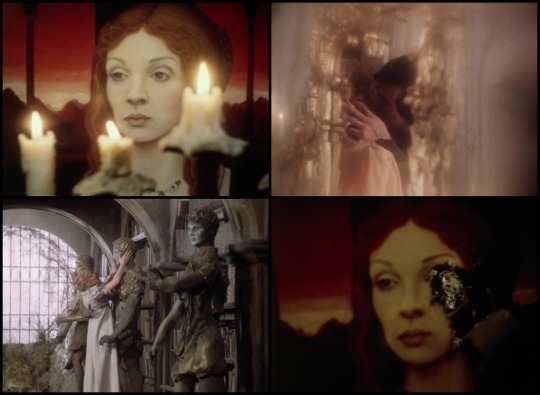
Beauty and the Beast (1978)
37 notes
·
View notes
Text

Beauty and the Beast (1978)
by Juraj Herz
#1970s movies#czech cinema#juraj herz#zdena studenková#Vlastimil Harapes#Jeanne-Marie Leprince de Beaumont#horror#dark fantasy#fairy tales
18 notes
·
View notes
Photo

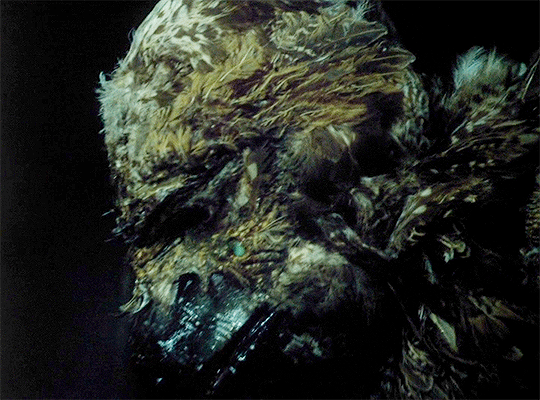




But how can she share my joy, she has not seen my hideous face, she knows only my voice...
Vlastimil Harapes as Netvor in Panna a netvor
#panna a netvor#beauty and the beast#filmedit#horroredit#mygifs#i adore him#messed up little bird guy#i don't know why i'm suddenly really into panna a netvor again don't ask
1K notes
·
View notes
Text

Magda Vásáryová in Marketa Lasarová (Frantisek Vlácil, 1967)
Cast: Josef Kemr, Magda Vásáryová, Frantisek Velecký, Ivan Palúch, Pavla Polásková, Michal Kozuch, Harry Studt, Vlastimil Harapes, Zdenek Kryzánek, Vladimir Mensik, Zdenek Rehor. Screenplay: Frantisek Pavlícek, Frantisek Vlácil, based on a novel by Vladislav Vancura. Cinematography: Bedrich Batka. Art direction: Oldrich Okác. Film editing: Miroslav Hájek. Music: Zdenek Liska.
I am grateful to Tom Gunning's Criterion Collection essay on Marketa Lazarová not only for the many insights into the film, including a concise summary of the story it tells, but also for citing another film scholar's comparison of it to Andrei Tarkovsky's Andrei Rublev (1966). My viewing of Frantisek Vlácil's film was very much like my first viewing of Tarkovsky's: It left me with a feeling that I had seen something extraordinary that I didn't quite understand. I've seen Andre Rublev again, and while I can't say I understand it, I recognize it as the extraordinary cinema masterpiece that it is. It's entirely possible that another viewing of Marketa Lazarová might leave me with a similar impression. Both films are immersive experiences, throwing the viewers into an era strange to them and giving them only a few guideposts to help them sort out even such matters as who's doing what to whom and why. Marketa Lazarová has been voted the greatest Czech film by Czech critics and filmmakers, and I have no doubt that it deserves the accolade. But it will take me another viewing simply to get my bearings on it. It's beautifully filmed, and it does some daring things with sound -- the voices were dubbed later, sometimes with actors other than the ones we see on screen. Every film in a language foreign to me is a cultural challenge, though one I welcome, so much kudos to TCM for programming Marketa Lazarová.
0 notes
Photo



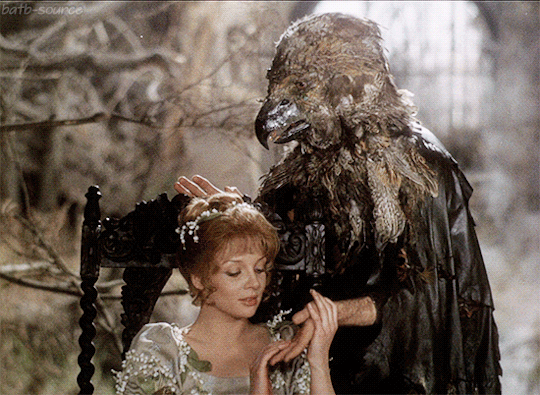




Zdena Studenková as Julie & Vlastimil Harapes as Netvor (the Beast) in Panna a netvor / Beauty and the Beast (1978), dir. Juraj Herz
#perioddramaedit#periodedit#horroredit#worldcinemaedit#dailyworldcinema#ladiesofcinema#adaptationsdaily#filmedit#moviegifs#cinemaspam#beauty and the beast#zdena studenková#vlastimil harapes#panna a netvor#character: belle#character: the beast#adaptation: film#film: panna a netvor#post type: graphics#*mine
2K notes
·
View notes
Photo
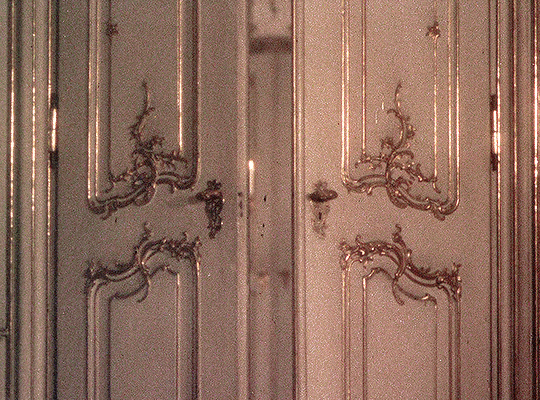


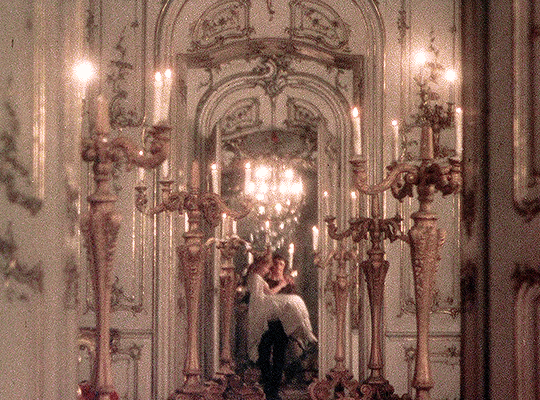






Panna a netvor / Beauty and the Beast (1978) dir. by Juraj Herz.
#Panna a netvor#Beauty and the Beast#Juraj Herz#Zdena Studenková#Vlastimil Harapes#Czechoslovak#Czech#Czechoslovak Cinema#Czech Cinema#Czechoslovak Fairy Tale#Czech Fairy Tale#Fairy Tale#Horror#My Gifs#tw: flashing gif#GD
1K notes
·
View notes
Photo


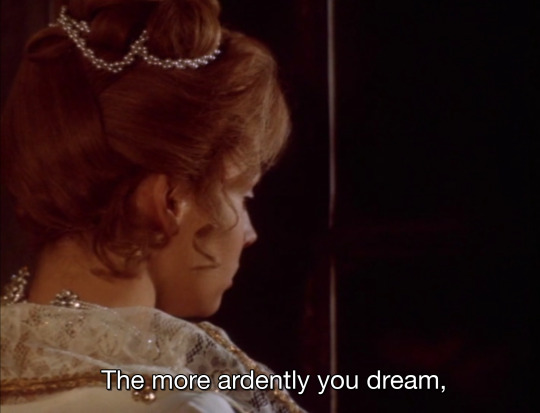

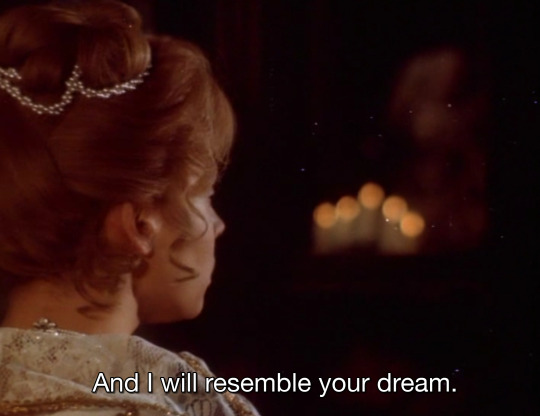
Panna a netvor -- Juraj Herz (1978)
#Beauty and the Beast#Panna a Netvor#Juraj Herz#film stills#dark#disney#korean film#adapted fairytale#The virgin and the monster#mine#Zdena Studenková#Vlastimil Harapes#1978#czech new wave
169 notes
·
View notes
Photo

Beauty and the Beast
directed by Juraj Herz, 1978
13 notes
·
View notes
Text
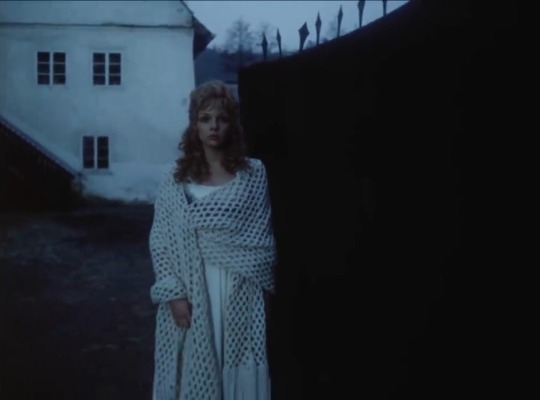
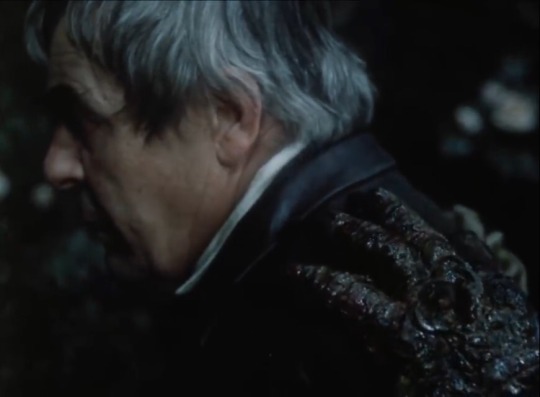







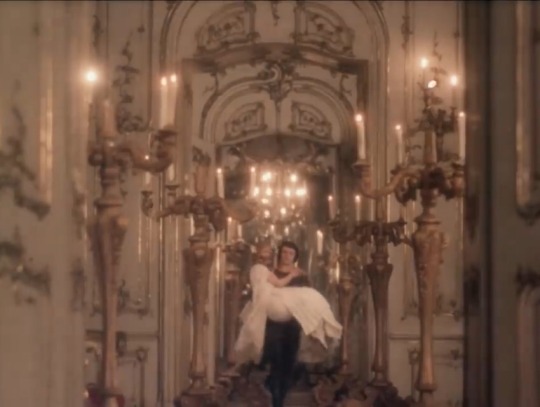
Beauty and the Beast (1978)
59 notes
·
View notes
Photo
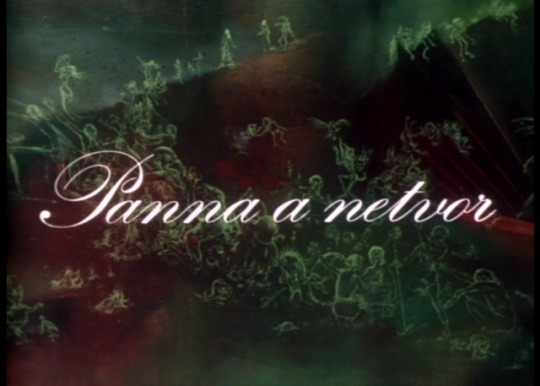






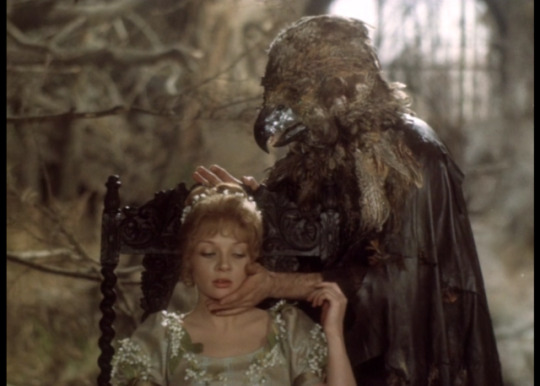
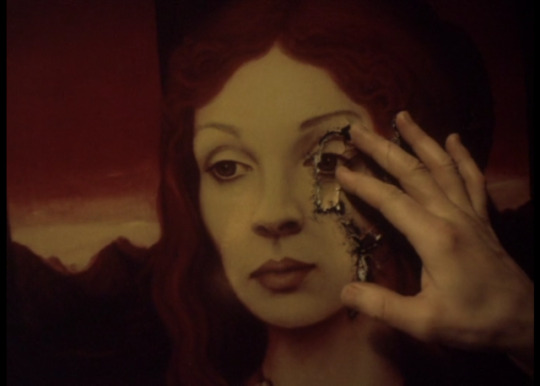

Panna a netvor - Beauty and the Beast (1978)
#panna a netvor#beauty and the best#juraj herz#zdena studenkova#vlastimil harapes#fantasy#horror#gothic horror#gothic fantasy#fairy tale#horror fairy tale#gothic fairy tale#czech new wave#czech cinema#czech fantasy#czech fairy tale#70s horror#70s fairy tale#70s fantasy#mme villeneuve#dark fairy tales#gothic aesthetics#euro horror
224 notes
·
View notes
Photo






Beauty And The Beast (1978) Ostalgica (forum.blu-ray.com)
#beauty and the beast (1978)#beauty and the beast#panna a netvor#juraj herz#zdena studenková#vlastimil harapes#václav voska#horror movies#fantasy movies
5 notes
·
View notes
Photo

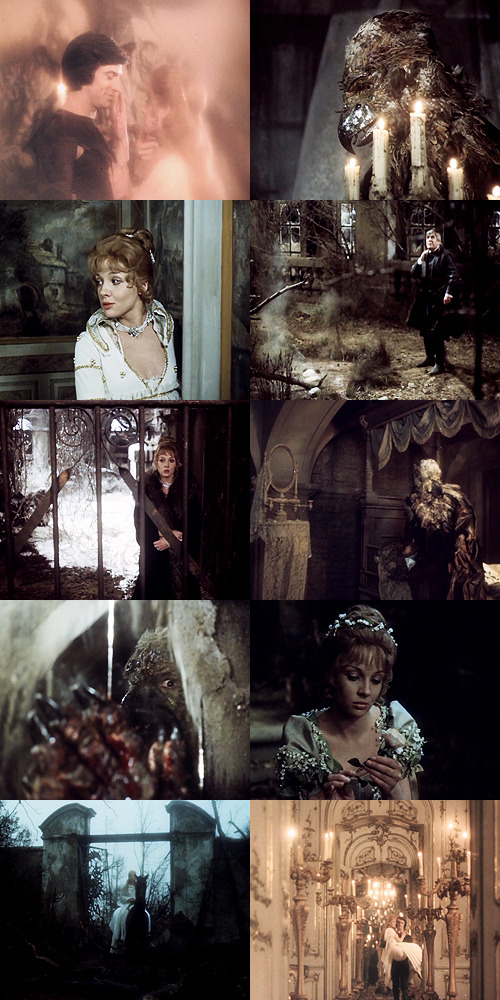
Films Watched in 2017:
32. Panna a netvor/Beauty and the Beast (1978) - Dir. Juraj Herz
#Panna a netvor#Beauty and The Beast#Juraj Herz#Zdena Studenková#Vlastimil Harapes#Václav Voska#Jana Brejchová#Zuzana Kócúrikova#Films Watched in 2017#My Edits#My Post
71 notes
·
View notes
Text
TOP 12 BEASTS (FROM BEAUTY AND THE BEAST)

@sunlit-music @princesssarisa @superkingofpriderock @mademoiselle-princesse @draculashaxanbride @amalthea9 @theancientvaleofsoulmaking @astrangechoiceoffavourites
The sequel came! A ranking dedicated to my favorite fairy tale prince, to who’s anger, antissocial behaviour, shyness, awkwardness and desire for love and understanding i always related to as a child.
12º The version from Britannica’s Tales Around The World (1990)
In this direct-to-video animated educational series presented by Pat Morita, the gargoyle inspired Beast appears wild, specially because is one of the few versions that doesn’t wear clothes, but overall is the most sad and fragile encarnation, and that frailness is conveyed trough his raspy voice. I just want to comfort this ugly cute puppy so much...
11º Vincent Cassel as the Beast in Christophe Ganz’s La Belle et La Bête (2014)
Once there was a Prince who was happily married to a beautifull woman. One day, she promissed to give him a son to be the heir of his lands, as long as he stoped obsessing in hunting a Golden Deer. He promissed, but his pride, stuborness and vanity was stronger, and he didn’t kept that promisse, ending up killing his beloved wife, who was a forest nymph that tooked the form of the Golden Girl. As punishment, he must live as a Beast to atone for his wifes’s death, and find someone that will help live a cleaned life, happy and free of any guilty.
10º Xavier Rouillon as Azor in Zémire et Azor (2014)
He kind of tries to act wild as a façade, but really, he is still a fragile hearted, sensitive Prince, who just a loving hand to comfort him.
09º George C. Scott as the Beast in Beauty and the Beast (1976)
A performance that was nominated for the Emmy Award of Outstanding Leading Actor in a Special Program - Drama or Comedy, and rightfully so. This is the most explosive encarnation of the character put in front of a camera: Scott’s Beasts has moments of talking calmly, specially when he offers to tell the tragic story of the death of a unicorn to Trish Van Devere’s (his real life wife) Beauty. But most of the time he is awkward and bursts into anger, to later mourn in deep remorse. In real life, George C. Scott fought for most of his life with his alcoholism and his explosive temper that kept people away in fear of him, and i cannot help but see this struggle reflected in his portrayal of the Beast, wich makes me more touched by it.
08º Mikhail Fyodorovich Astangov/Tim Curry in Soyuzmultifilm’s Alenkiy Tsvetochek (1952)
The cutest, most adorkable Beast ever. His sad voice and his big puppy eyes are simply sweet.
07º Aleksandr Abdulov as the Forest Spirit in Irina Povolotskaya’s Alenkiy Tsvetochek (1977)
A Forest Spirit who camouflages his body to take the form of surroundings, be they rocks, leafs or wood, with only his eyes remaning human. At first, his presence feels unsetling, but slowly he becomes a presence that makes us feel confortable and safe.
06º Mark Damon as Duke Eduardo in Edward L. Cahn’s Beauty and the Beast (1962)
Cursed as a child to become a Beast every night in the moment he started to rule his Dukedom/Principality, Don Eduardo searches to reconcile his duties as a ruler with his search to be fully human, all the while his uncle Bruno plots to take the dukedom from him. Interestingly only his appearance become animal like, but his mind keeps being human, what is a very refreshing aproache to the character.
05º Jean Marais as the Beast in Jean Cocteau’s La Belle et La Bête (1946)
The most iconic and influential encarnation. To quote Megan Kearney, Marais’s mysteryous Beast is more of a “cipher for the unconscious than a fully fleshed out character, but that makes sense in the dreamy, surrealist world of this film”. Troughtout the movie he acts like a very controlled aristocrat, but later we see how he tries to repress his beastly instincts, and how broken, tortured and vulnerable he is inside.
04º Gregory Hines as Koro in Happily Ever After: Fairy Tales For Every Child (1995)
One of the first encarnations that is not brooding, but instead, while acting stressed at the begginging of the cartoon, is overall a funny awkward dorky, who sings an excited song talking about his desire for Beauty to love him for who he is. I want his plushy.
03º Argus from Megan Kearney’s Beauty and The Beast Webcomic (2012-17)
The outcast bastard son of a nobleman, who learned to use magic in the hopes of becoming powerfull, but in reality created a lonely prison for himself. His only comforts are the studies of botanics and herbology, and Beauty’s friendship. Argus’s arc involves letting go of pride, and learning to open his feelings, and accept the helping hand of others.
02º Raymond Benson as The Beast/Prince Adam in Disney’s Beauty and The Beast (1991)
A hibrid of buffalo, boar, wolf, lion and gorilla with bright human eyes, who hopes to have his humanity seen by others, but must give the first step and see that humanity in himself, because after ten years of being cursed by a sorceress whose old appearance he judged and to who he refused shelter, he sees himself as only a monster. Disney’s Beast is one of the first characters i remember at first fearing as a villain, to later cheer for as my heroe.
And now, the moment everyone is waiting for. My Number One Beast portrayal is...
01º Vlastimil Harapes as The Beast in Panna a Netvor (1978)
With a design that is a mix between vulture and bird of prey, this Beast lives isolated in the middle of old ruins of a once rich palace. He is fusing himself to those ruins, alone for so long that now his mind talks to him, pushing him to become more and more wild, he even hunts humans and animals to drink their blood to survive, making him grow repulsed of himself. When the beautifull and sweet Julie comes to live in his palace, Harapes’s Beast feels divided between loving her, or killing her to drink her blood like he did with many other people before. He has been in the Beast form for so long, that he feels powerfull and safe in it, so he is afrayed that someone will come close to break his enchantment. That version of the story notoriouslly has no external character to be a villain: the antagonistic force is the Beast’s own mind. Villain and hero, scary and simpathetic, powerfull and vulnerable: Harapes’s Beast is all of those things. And that is why he is my Number One portrayal of The Beast.
HONORABLE MENTION: Grimm’s Fairy Tale Classics (1989)
#beauty and the beast#fairy tales#classic cinema#the scarlet flower#fantasy#folklore#mithology#genre fiction#pop culture
48 notes
·
View notes
Text
#703: 'Marketa Lazarová', dir. František Vláčil, 1967.
Marketa Lazarová is a slightly unusual film for me, because its effects go slightly beyond my ability to articulate or explain them. I originally saw it at a Film Society screening in 2015 or 2016, back when I was able to go to movies at 6 p.m. on a Monday evening, and it enthralled me then, splayed wide across the screen at the Paramount in crisp black and white. I knew very little of Czech cinema at the time and, embarrassingly, still haven't seen very much. Coming back to it five years later, it still holds a lot of that arcane power that it had. Marketa Lazarová is simultaneously a meditative experience and a gut punch.
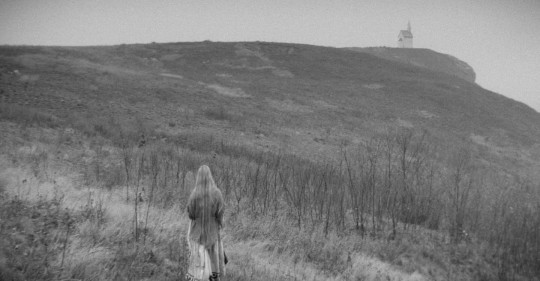
František Vláčil was one of the Czech filmmakers who was originally trained with the Army Film Division, which surprisingly became a breeding ground for avant-garde filmmaking styles. Vláčil became disillusioned with the types of historical films that were being produced at the time, which seemed to him to feature contemporary people pretending to be characters from the past. What was needed instead, he argued, was a more immediate form of historical cinema that made audiences feel like they were witnessing history rather than a lacklustre interpretation of it.
In order to achieve this, he frequently joined his cast and crew on long-term shoots where they lived in the types of conditions that the characters would. Sets were built using traditional methods, and scripts were written using archaic dialects to avoid that common experience of characters speaking in a recognisably modern way. The shoot for Marketa Lazarová lasted almost two years in these conditions.
The film's plot concerns three groups. The Kozlík clan, a family under the helm of a robber baron, robs a noble entourage and takes Kristian, the son of the bishop, hostage. Before Kozlík's sons can return to claim their loot, a neighbouring clan led by Lazar steals the spoils. Lazar is saved from being killed when a vision of a nunnery on a hillside appears.
One of the chief themes of this film, alluded to early on, is the conflict between paganism and early Christianity. The two worldviews are muddy and indistinct, but the difference between them is what drives a lot of the retribution in the film. Kristian falls in love with one of Kozlík's daughters, Alexandra, while Kozlík's son, Mikoláš, falls in love with Lazar's daughter, Marketa, whom he has taken as a hostage in retaliation for Lazar refusing to side with Kozlík against the king and the bishop. In addition to the religious dimension, then, there is also an ongoing theme of where one's loyalties lie - with existing morals (family, God) or with the person you love.
Over the course of this epic, the fates of all three groups trend downhill: members of each of these bands are slaughtered and betrayed; Kozlík and Alexandra are imprisoned; Marketa is released by Mikoláš but rejected by Lazar. The film's conclusion seems to suggest that it is Marketa, and the future generations she helps to bring into the world, that will be able to overcome the divisions that affected the clans so catastrophically, but also acknowledges that these types of conflicts are part of the human experience.
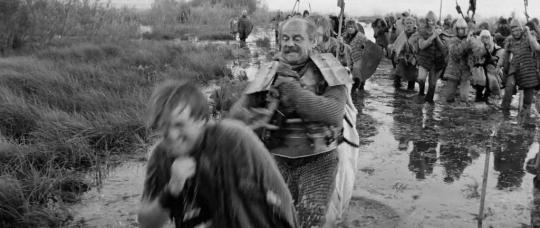
As vast and interwoven the plot of the film is, it's not what makes the experience of watching quite so transcendent. What makes this film feel like an out-of-body experience is Vláčil's use of non-linear and non-realistic techniques. Parts of the film's story are told in flashback, but without any explicit indication that this is happening. At times we see disconnected, hallucinatory images that only make sense when they are contextualised later on. One example of this is an erotic scene between Alexandra (Pavla Polášková) and a young man, who we assume to be Kristian (Vlastimil Harapes). It's only later that we discover that this is a flashback to an abortive romance between Alexandra and her brother Adam (Ivan Palúch) - a man I had initially disqualified from appearing here because Adam only has one arm in the current scenes. Revealing that it is Adam propels the story forward in traditionally linear fashion, but also causes the viewer to reassess the film's earlier scene to determine why these images are included there. These images are made further alien by their unexpected visual qualities: the sex scene takes place in a field of summer grain, but most of the film's 'present day' takes place in winter and early spring. Rather than ascribe them to an unmotivated flashback, it seems easier to read them as a poetic hallucination, and then Vláčil returns to reorganise what we had previously believed of the narrative.
As well as the narrative structure, Vláčil frequently employs long periods of silence and a seeming mismatch of cinematography, where figures are either oddly close to the camera or absurdly far away. On a deep level, it feels like nobody, even the director, has total control over what is being portrayed - like we've entered a kind of fugue state in which cinema just happens regardless of how legible its results are. Although its filming process was so long, the resulting scenes feel accidental or improvisational, culled down from a vast amount of footage.
While many of these techniques give us the experience of watching a dream of an imagined past, these techniques are also quite violent and confrontational. Even when the shots are distant or filmed in long takes, they're cut together in a jarring way, and the lack of a straightforward narrative makes it difficult on the viewer too. The activity implied in this method of editing, a complicated soundscape and opaque narrative combine to make Marketa Lazarová a film that feels very immediate and present. As Tom Gunning put it, writing for Criterion about his early encounters with the film, "an energized mobile camera and abrasive editing peers into a primitive era of human history."
Just as the characters of the film are quick to anger and quick to act, the film also lacks temperance. This is a film of life and death in its most vital forms, and so it makes a certain kind of sense that Vláčil would, in defiance of the typical historical film, try and remove any layer of modern logic or reason that would prevent us from experiencing the film's events in a visceral way. This is also why the myth of the werewolf hangs so heavily over the film - invoked a few times by Kozlík's wife, and present in the appearance of his children and their uncanny survival abilities - it both defies modern logic and refers to a particularly corporeal type of monster.
Vláčil structures Marketa Lazarová with sudden intertitles that refer to the events and themes that we are about to see, in a poetic way that recalls the chapter titles of a 19th-century novel. 'On the Lot of Widows' and 'Who in the Past Brewed with Hops' provide the vantage point of someone placed about the action, narrating it to us in a distant sort of way. The music is similar: both ancient and modern, it frequently uses atonal incantations. Taken together, it feels like this story is being shouted at us from a distant time when things were more tactile. "The presence of animals and plants, the textures of stone and tree bark, of snow and marsh water," Gunning writes, "cling to us as we watch, often overriding the narrative."

The grand experience of watching this film is partly contradictory, then: this is a film that feels very modern, tells a story from the past, alludes to contemporary struggles, and when situated in Czech film history is wildly experimental. Gunning sees this film as being, in some respects, a statement about what Vláčil thought cinema could be, in those days of the 1960s where most national cinemas were experiencing their own variations on the New Wave that had developed in France. The experimental aspects of the films of Godard and Varda would be subsumed into the traditional toolbox of cinema and lose some of their vibrancy as a result - either directors would use them for blockbuster films or extend them into a new type of experimental film that was sterile and aloof.Considering this, it's worth appreciating exactly how daring Vláčil was being here: under a Communist regime, making a film about paganism, bestiality, sadism, incest, and torture. With all this darkness, Marketa Lazarová is a bright film, even funny at times. Humanity is a fallen, self-destructive thing, but there is something about this way of life, before it was layered deep underneath civilisation, reason and enlightenment, that was exciting and vibrant.
Does civilisation mean we lose something of our potential? The final narration of Marketa Lazarová tells us that these cycles of mistrust and anger are likely to repeat through the generations, but is that a price Vláčil thinks is worth paying? The urgency and difficulty of life in the distant past was inseparable from the superstitions of the time, but the urges were easier to sate, at least temporarily. The taming of these clans, like the taming of the avant-garde techniques Vláčil employs here, might have been inevitable, but this film shows that there is something valuable there nonetheless.
9 notes
·
View notes
Photo


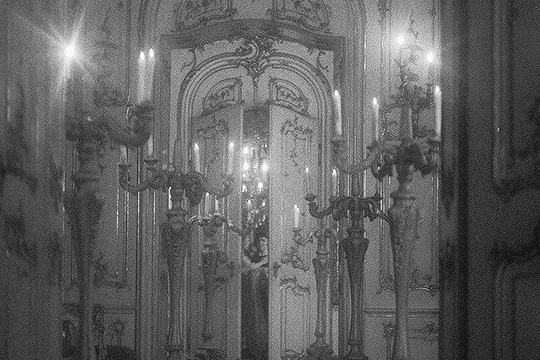


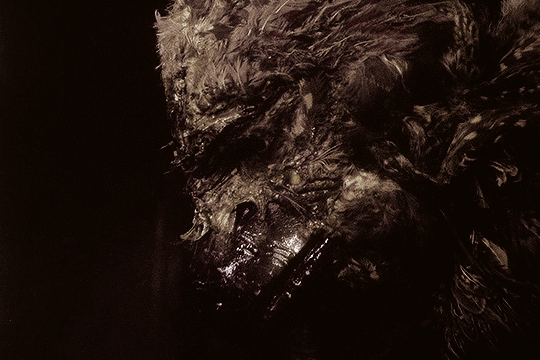
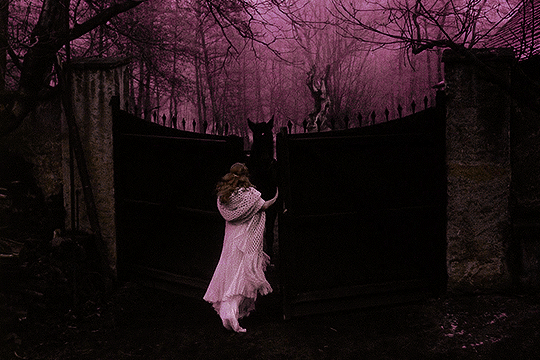

“I dream of you so often. In my dreams I see you... Your face, your eyes, your lips.”
Panna a netvor / Beauty and the Beast (1978) dir. by Juraj Herz.
#Panna a netvor#Beauty and the Beast#Juraj Herz#Zdena Studenková#Vlastimil Harapes#Václav Voska#Czechoslovak#Czech#Czechoslovak Cinema#Czech Cinema#Czechoslovak Fairy Tale#Czech Fairy Tale#Fairy Tale#My Gifs#GD
2K notes
·
View notes